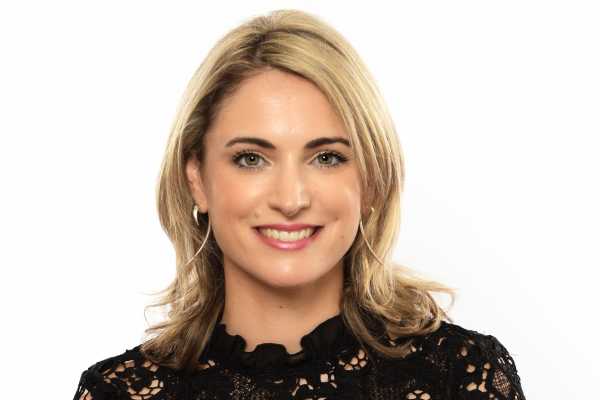Adam Gascoyne on making magical VFX moments amid the zombies on '28 Years Later'
Sony's '28 Years Later' is the seventh collaboration between VFX supervisor Adam Gascoyne and director Danny Boyle.
By Gabriella Geisinger 2 Jul 2025
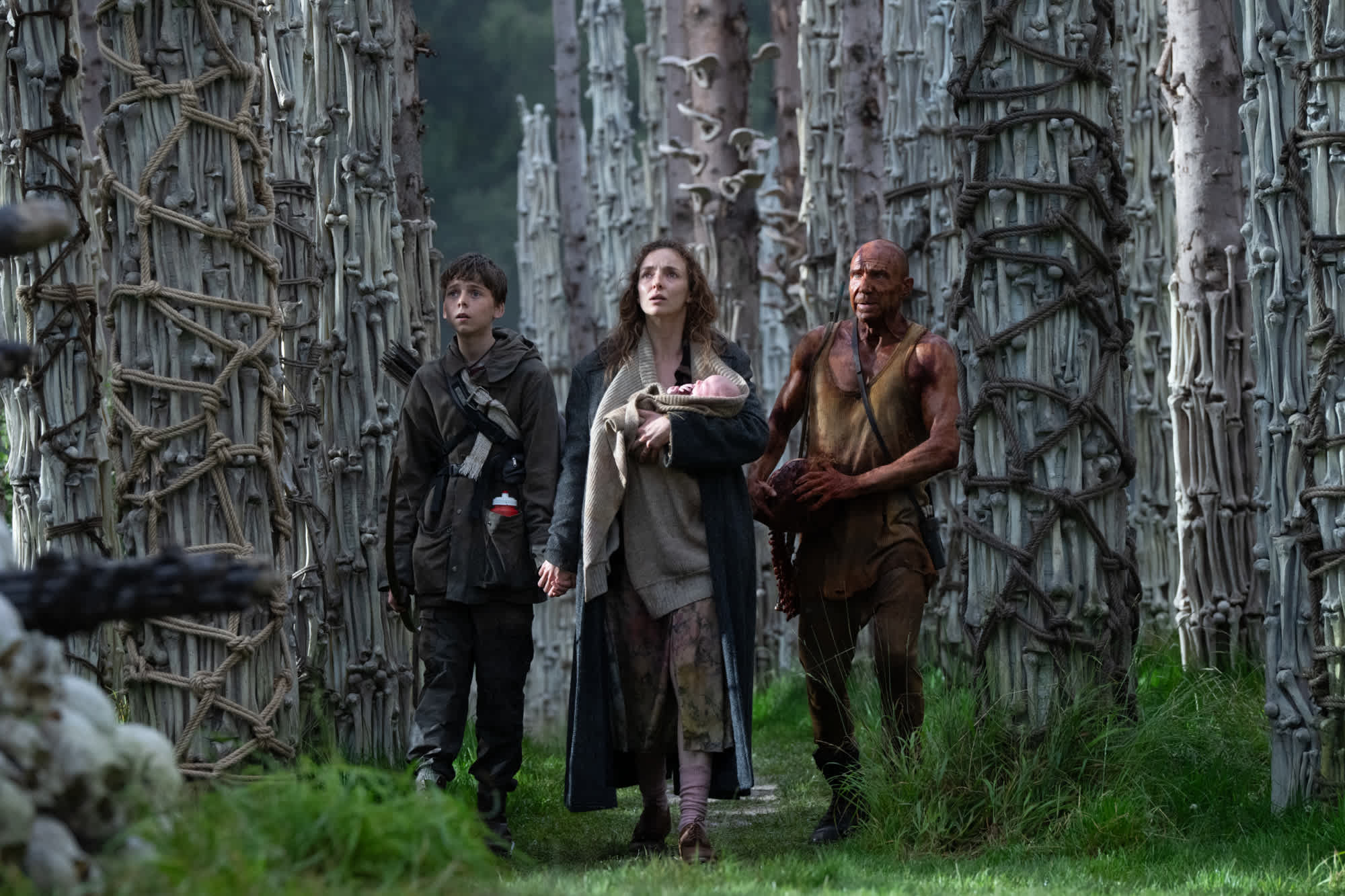
28 Years Later may not be the kind of film the average moviegoer expects to need extensive VFX work; it doesn’t take place on Mars, for example, or underwater. Yet for Adam Gascoyne, VFX supervisor from London-based Union VFX, it presented its own unique set of challenges. “You’re working in an environment that’s 28 years overgrown,” he notes. “Nature is reclaiming that, so the shots mount up.”
The Sony film, which stars Jodie Comer, Aaron Taylor Johnson, Ralph Fiennes and Alfie Williams, is the seventh feature collaboration between Gascoyne and Boyle, who first worked together on 2004’s Millions. 28 Years Later is set on Lindisfarne (also called Holy Island), a small island off the north-east coast of England which is connected to the mainland by a long causeway, passable only at low tide.
“We see that causeway in day and night, and it’s quite an important part of the story,” says Gascoyne. It’s also the setting for a visually striking chase sequence which was inspired, he says, by Kielder Forest on the England/Scotland border, where a great deal of filming took place.
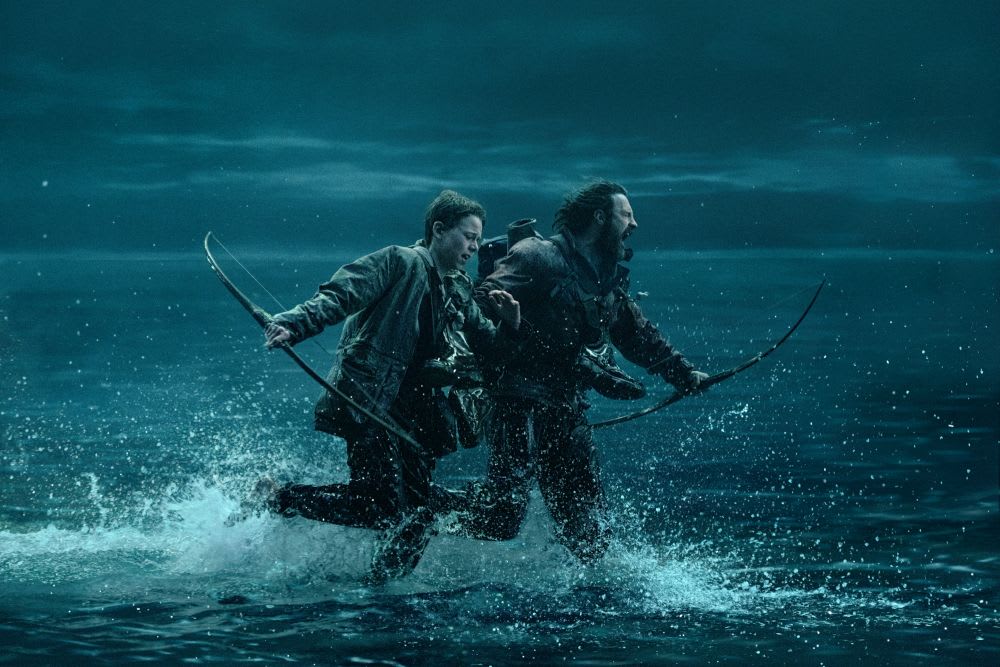 '28 Years Later' Source: Sony/Miya Mizuno
'28 Years Later' Source: Sony/Miya Mizuno
“The sequence was 130 shots, with fully CG water extensions and environments that all happens underneath this canopy of amazing stars,” says Gascoyne. “I’m really proud of the sequence. It’s got a magical quality to it. It’s a bit otherworldly. Danny and I had a conversation very early on about the magical skies and the [bioluminescent] plankton that was in the water, highlighting some of the wakes. I think we did get all that across.”
Invisible magic
Alongside these deliberately visible effects, elsewhere Gascoyne and his team were tasked with creating VFX which had to go unnoticed.
“Obviously the cast can't fire arrows, just in case something tragic happens,” says Gascoyne of the weapons used by the film’s characters to protect themselves against the infected. “So whenever there's an arrow in there, it's had some kind of additional VFX done.”
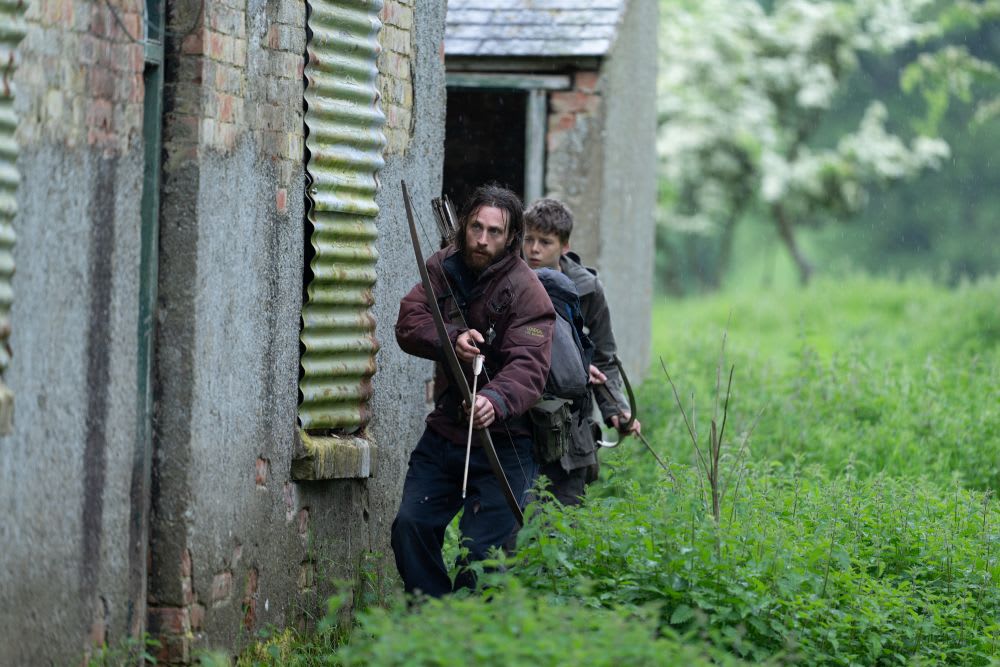
Jamie (Aaron Taylor-Johnson) and his son Spike (Alfie Williams); Source: Sony/Miya Mizuno
Gascoyne also worked closely with the SFX and stunt teams, particularly on one of the film’s most explosive set pieces set in a run-down service station restaurant. “The SFX Department added a layer of miasma which had to be animated throughout the sequence,” notes Gascoyne. “And then there’s the CG fire at the end, and the stunt within that fire. That was quite complex to capture and to simulate. Luckily Sam Conway, the effects supervisor, gave us some really great starting points [for VFX].”
Doing all this invisible VFX work is something in which Gascoyne takes great pride. “What I’ve really enjoyed throughout my whole career is hiding what we’re doing and also finding ways of shooting around things, not using lots of blue screen, for instance, and trying to find different ways and different technologies to capture something.”
The dream team
This project is far bigger in scale than both Boyle’s 2002 original 28 Days Later and its 2007 sequel 28 Weeks Later, directed by Juan Carlos Fresnadillo. One thing that helped was the crack team assembled for both this and the upcoming 28 Years Later: The Bone Temple, directed by Nia Da Costa and shot back-to-back with this film.
“It had to be almost seamless,” explains Gascoyne. “It's a very familiar team of people throughout every movie, so there's a shorthand there which is very useful.”
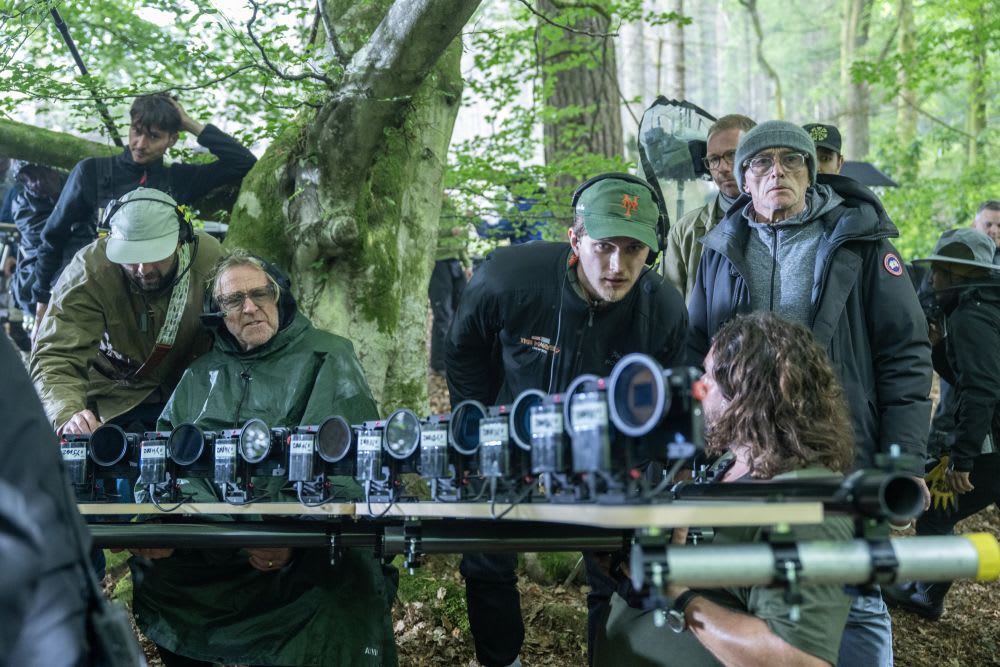
Anthony Dod (left) with Director Danny Boyle (right) with the barcam on '28 Years Later'; Source: Sony/Miya Mizuno
And once Boyle explained his vision, the team’s job was to “go away and work out how to do that for him,” says Gascoyne. “My experience with Danny over the last 23 years has been that everything has to be found within the photography, as far as the VFX goes, so there's a lot of things that we pull from what he's shooting, and we try not to make anything stick out."
This doesn’t mean, however, the shots are prescriptive. "A lot of planning goes into giving Danny and Anthony [Dod Mantle, cinematographer] the freedom in which to move within these environments,” says Gascoyne. “Danny doesn't make big VFX movies. And Anthony doesn't shoot in a conventional VFX friendly way, necessarily. They use a lot of different formats, a lot of moving cameras.
“Sometimes we had up to 36 cameras on set,” he continues. “A lot of the planning going in is to give them the freedom to move within the environment and still consider what we need.”
Latest news & features
Featured profiles
Promote your services with Screen Global Production
Choose from three profile types - Basic, Silver and Gold
Create ProfileWe offer a range of display advertising opportunities.
Learn More
